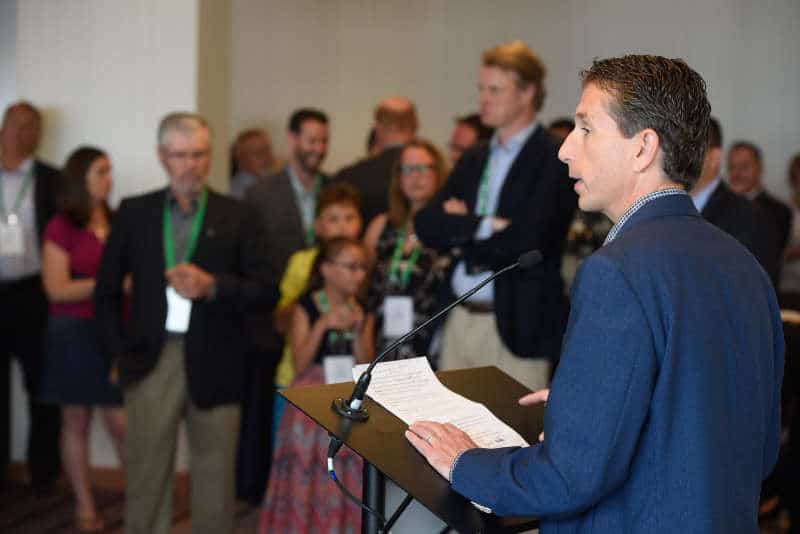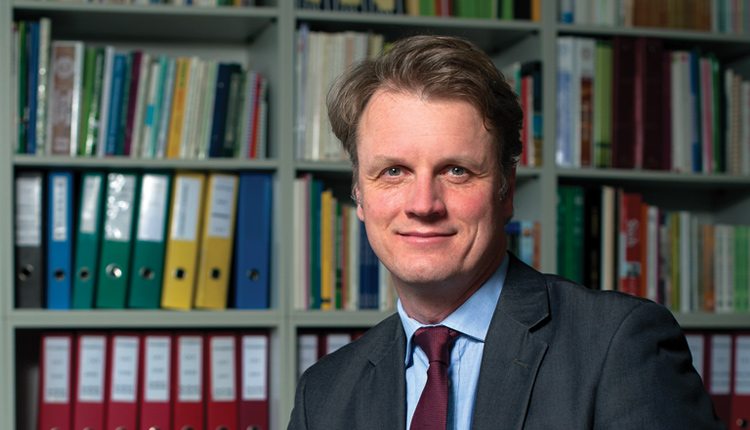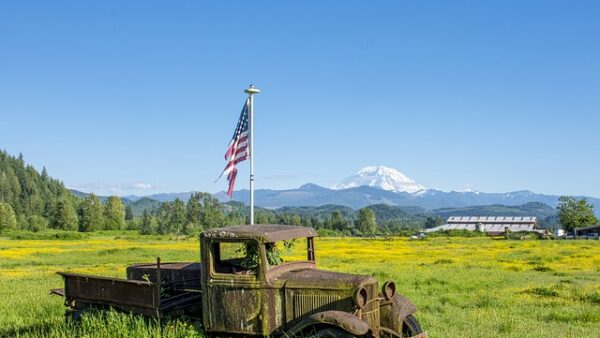The Canadian Seed Trade Association’s annual meeting looked ahead at what’s coming down the pipe for one of the country’s most important industries.
_x000D_
Outgoing Canadian Seed Trade Association (CSTA) president Scott Horner knows as well as anyone how important it is for the seed industry to have a roadmap for the future._x000D_
_x000D_
The pastoral view of the red hip-roofed barn, 100 acres with 10 cows, 20 chickens and five pigs is a romantic view of agriculture, but it’s not accurate today and it’s doing a disservice to the industry, he notes, distracting from the reality of todays advanced farming systems and the demand for low cost nutritious, sustainable production._x000D_
_x000D_
Combating such misnomers is important for agriculture and the future of Canada’s seed sector._x000D_
_x000D_
In a recent survey conducted by the Canadian Center for Food Integrity, only 29 per cent of those interviewed felt farmers are good stewards of the land. Yet the reality is we have never farmed more sustainably than we do today, and we need to tell that story better, he says._x000D_
_x000D_
“Where do we want the industry to go and what do we need to do to get there?” Horner says over the phone from his office in Coaldale, Alberta._x000D_
_x000D_
Drawing that “roadmap” for the future of seed was the task at the CSTA annual meeting held in Vancouver in early July. Two hundred delegates came together to talk about seed, where the industry is, and where it’s headed. Tackling such a big topic over a three-day conference is no doubt difficult, but a necessary task considering how many changes are afoot for Canadian seed._x000D_
Next Big Step
_x000D_
Delegates acknowledged recent developments within the industry that Horner says signal the industry is headed in the right direction, like recent legislation that favours the seed industry._x000D_
_x000D_
“Last year we had UPOV 91 passed through Bill C-18, and there were immediate results of that,” Horner says. UPOV, or the International Union for the Protection of New Varieties of Plants, provides a legal framework for ensuring the intellectual property of plant breeders is protected. UPOV’s 1991 framework took 25 years to become law in Canada, a prime example of how slow things can move for an industry that thrives on innovation._x000D_
_x000D_
“As a result of that, there was a significant increase in the amount of varieties registered,” Horner adds. Foreign varieties are entering he market, he notes, and significant new investment in Canadian seed is being seen._x000D_
_x000D_
Last year, a new initiative was launched in Limagrain Cereals Research Canada, a new joint venture cereal seed research and development company that will contribute to the advancement of cereals for Western Canada. Then there was the opening of the Bayer Wheat Breeding Station in Pike Lake, Sask. Both major initiatives made possible, in part, by UPOV 91 becoming law in Canada._x000D_
_x000D_
“Given what UPOV 91 means for our industry, where would we be today if it had been approved 20 years ago? Let’s look at today’s challenges and opportunities, collaborate with our partners and do everything we can to ensure we’re not behind in making the next big step for our industry,” Horner says._x000D_
International Voice
_x000D_
As secretary-general for the International Seed Federation (ISF) based in Switzerland, Michael Keller has his finger on the pulse of world seed, including what’s coming out of Canada — one of the world’s most crucial seed providers. Keller was present at this year’s annual meeting of the CSTA, where he spoke about what the Canadian seed industry needs to do in order to remain a prominent player on the world stage._x000D_
_x000D_
As part of a panel discussion on the future of seed throughout Canada and the world, he had some key insights for the 200 delegates present._x000D_
_x000D_
“Getting members involved is critical for an association — and involvement needs excitement. Fundamental to this is to have a common dream — a shared vision for ISF and its members is critical,” he says. “There also needs to be a clear, comprehensible roadmap setting out the strategic objectives from which we can develop coherent and consistent key messages.”_x000D_
_x000D_
Keller shared his “Six A’s” with the delegates — Association, Acceptance, Assessment, Actions, Advocacy, and Alliances. According to Keller, it’s based on one of ISF’s core values — collaboration._x000D_
_x000D_
“We have to accept the way things are changing and adapt our associations in order to secure our future. ISF relies on members to be ambassadors in their words and actions, and national seed associations have to clarify who is doing what.”_x000D_
_x000D_
Leadership
_x000D_
Brent Derkatch is one of the people responsible for steering the CSTA. As incoming president, he takes over for Horner. Derkatch is operations and business development director for Canterra Seeds._x000D_
_x000D_
“This was the second annual meeting now where we’ve implemented a work plan strategy for each operating committee. It helps us formulate a nice agenda and monitor our progress,”Derkatch says._x000D_
_x000D_
Monitoring that progress is becoming increasingly important for an industry where technology and the regulatory environment are changing faster and more dramatically than ever before._x000D_
_x000D_
The seed industry today is faced with amazing opportunities, but also unprecedented challenges, says Horner. To complicate things the path to success is littered with many contradictory consumer and political influences, he adds. People want a cheap and abundant supply of nutritious food, and they want it delivered on a plate of environmental sustainability, but they won’t support the technology that can provide it._x000D_
_x000D_
“How do we as an industry and association function in this environment of contradictory influences? We can’t afford to wait 22 years for an effective royalty model to support breeding and development in the cereal sector, like we waited 22 years for UPOV 91._x000D_
_x000D_
We can’t afford to see new breeding techniques shelved because we haven’t been able to demonstrate their value to society,” Horner says._x000D_
_x000D_
“We can’t afford to lose export markets because not enough effort was put into establishing low level presence policy here at home and internationally. What’s the answer? Part of it is the development and execution of sound CSTA strategy designed to achieve our strategic goals.”_x000D_
_x000D_
CSTA executive director Crosby Devitt marked one year in his position at the annual meeting. He’s tasked with implementing those strategic goals, and says public trust in agriculture often affects seed more than anything else. A sound plan for the years ahead is key to securing a prosperous future for seed in Canada, he says._x000D_
_x000D_
Doing so, he thinks, will involve putting a human face on the industry more than ever before, something he’s had the pleasure of doing over the past 12 months as CSTA executive director._x000D_
_x000D_
“When you actually know the people involved in agriculture and the seed industry, you see the integrity and commitment they have to developing safe products. Then when you witness negative consumer perception around new technology, it creates a stark contrast. Creating the opportunity for people dedicated to seed to talk with consumers will diffuse the fear and build trust in the future of our food system.”














